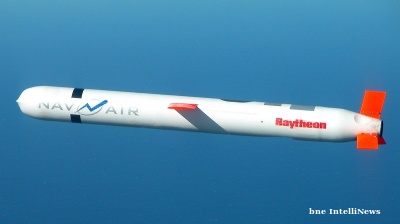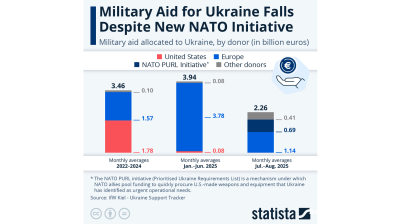Since Berlin announced it would send tanks to Ukraine this week, pledges from a dozen countries have come pouring in to send tanks from their own arsenals. Altogether the Western allies have promised to send at least 156 tanks – a game-changing brigade (which comprises 2-3 battalions of 52 tanks each) that can crush Russia’s Soviet-era tanks and turn the tide of the war in Kyiv’s favour.
On January 24 Berlin caved in to European peer pressure and announced that it would send “at least one company” of Leopard 2 tanks, considered to be amongst the best in the world. There are usually 14 tanks in a company, and three companies plus command tanks in a battalion.
Poland has been leading the call to send the powerful Leopard 2 main battle tank (MBT) and has promised to match Berlin’s commitment with 14 of its own Leopards from its fleet of 247. With stocks of spare parts and maintenance centres close to Ukraine, Poland is likely to become a major staging post for the battalions of Leopards that could start rumbling into Ukraine soon.
Not all the tanks pledged to Ukraine are Leopards. The US has promised 31 of its Abrams MBTs, but as there are few of these in Europe all the parts and technical support will have to be flown across the Atlantic. Poland has a few Abrams as well, so again it becomes the most obvious base to support these tanks fighting in the Ukrainian theatre.
The UK has also promised a company of its Challenger 2 MBTs and training for Ukrainian operators has reportedly already begun.
French President Emmanuel Macron said in the lead-up to the Berlin decision on Leopards that France was not against sending its state-of-the-art Leclerc MBTs from its fleet of 222, but Paris has yet to announce a firm commitment.
And Sweden has also said that it is open to contributing some of its home-made Stridsvagn 122 tanks (S-tanks) from its fleet of 280 tanks, one of the biggest in Europe, but also has yet to make a firm commitment to how many, if any, it will send.
Other countries currently sitting on the fence are Denmark, Finland and Canada, all of which have Leopards, but which have yet to make a concrete commitment.
Spain said on January 26 it is ready to hand over 53 Leopard 2s to Ukraine. However, only 20 are in good condition, and the other 33 require appropriate maintenance. With 347 Leopards in its arsenal, Spain has by far the largest fleet of tanks in Europe – more than Germany’s 320 (of which only a third are action-ready).
Plucky Netherlands has committed to send its entire fleet of 18 Leopards which, unlike the other countries, it doesn’t own and has on lease from Germany.
The German Chancellor’s office said in a statement that it would give permission to anyone that wanted to re-export their German-made Leopard 2 tanks, but so far only Poland has formally applied for a re-export licence.
The commitment to sending the offensive MBTs can be seen as a major escalation in the war as the West abandons its previous policy of supplying Ukraine with defensive weapons and now promises to provide tanks that could change the tide of the battlefield fighting. However, caution is advised, as getting the tanks to Ukraine will take time and the Ukrainian tank crews will need significant amounts of training to be able to operate and maintain these sophisticated tanks.
Training on Abrams tanks could begin in “weeks, not month,” John Kirby, the White House’s strategic communications coordinator for national security, told reporters on January 25.
It is clear that Kyiv would like to mount a counter-offensive as soon as possible and has been calling on the West to send MBTs since March of last year in the first month of the war, but to no avail.
Russia committed some 3,000 of its largely Soviet-made tanks to the invasion, but Ukrainian forces, using the US-made Javelin missiles, have destroyed more than half of them. Russia is reportedly bring in its own state-of-the-art Armata T-14 MBTs that have been designed to counter the Leopards and Abrams, but according to reports only a handful of its stock of 40 have been deployed. The Russian crews are reportedly very unhappy with the “poor condition” of the tanks. A tank was showcased in last year’s May Day parade on Red Square, but embarrassingly its engine caught fire and the tank had to be towed away. According to recent reports, the problem with the engine has not been fixed.
The clock is ticking and the Western tanks need to arrive soon. As bne IntelliNews reported, Russian President Vladimir Putin appears to be planning a major counter-offensive of his own and all the indicators suggest Moscow will launch a mass mobilisation in the spring sometime after the start of March.
With the fighting currently in a stalemate, concentrated around the Donbas city of Bakhmut, Kyiv is hoping for a hammer blow in the remaining months of winter to drive the Russian army out of its territory before the Kremlin has completed its preparations for its own counter-offensive in the spring and floods the country with fresh troops.

News

Mongolia’s PM ousted as party infighting topples government
Right to challenge sacking means battle may not be over. Observer says confrontation is linked to desire for control of country’s vast coal resources.

Ex-chairman of Istanbul-listed Sisecam hit with travel ban in Can Holding investigation
Company is controlled by "Ataturk" bank Isbank, which has previously been in the crosshairs of Turkish president Erdogan.

Ghana’s dormant TOR refinery to restart crude operations by October-end
Ghana has long struggled to translate its crude output into refined fuel security. Successive governments have pledged to revive TOR, which has faced years of debt, mismanagement, and technical breakdowns.

No Tomahawks for Ukraine, Trump to meet Putin in Hungary
The US cannot deplete its own stockpile of Tomahawk cruise missiles by supplying them to Ukraine, President Donald Trump said at a press conference on October 16 following a phone conversation with Russian President Vladimir Putin.



